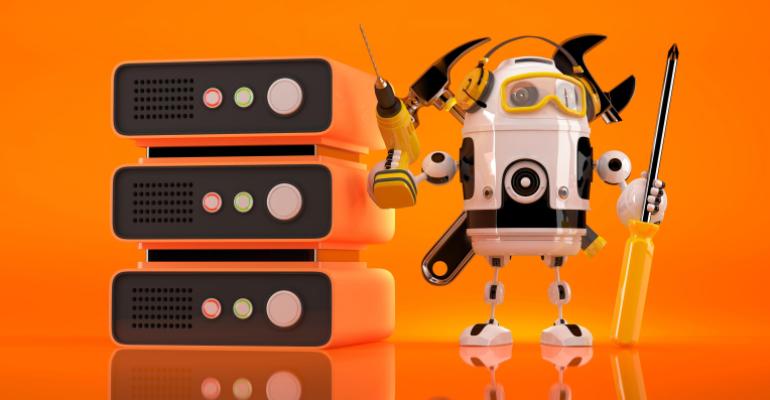At first glance, the notion of an "unmanned" data center may sound almost like science fiction. But actually, unmanned data centers are already here – and there's good reason to think that they'll become more prominent in coming years, due both to the growing availability of technology for operating data centers without staff on site, and to the increased benefits of running "lights out" facilities.
Here's what to know about unmanned data centers, including how they work, why they're valuable and how they could impact the data center industry over the next decade or so.
What Is an Unmanned Data Center?
An unmanned data center – sometimes also called a "lights out" data center – is exactly what it sounds like: A data center that has no personnel on site. (For the record, we think a term like "unhumaned data center" would be a little more appropriate, since not all data center personnel are male, but "unmanned" is the jargon that has caught on in the industry, so it's what we're using.)
Most data centers don't typically have an especially large number of technicians working in them, since most facilities don't require a ton of maintenance. But a conventional data center usually has at least a handful of staff present who can handle tasks like overseeing power and HVAC systems. Some facilities also rely on on-prem staff to provide "white glove" services to customers, like standing up and managing servers.
In an unmanned facility, however, there are never any staff on site during normal operations. Personnel might very occasionally visit the facility to perform maintenance, but day-to-day operations are so fully automated that the data center can go weeks or months without a human touch.
Importantly, people can – and often do – help to operate unmanned data centers. But they do so remotely, relying on network-connected tools to monitor facilities and implement changes.
The Pros and Cons of Unmanned Data Centers
The main benefit of an unmanned data center boils down to saving money: Because unmanned facilities don't require staff to be physically present, they cost less to operate. Although a data center operator might still be paying engineers to support an unmanned facility remotely, staffing costs are likely to be lower because a single team can oversee multiple facilities – something that would not be possible if staff had to be deployed to each local site.
In addition, unmanned data centers tend to be designed to deliver a high degree of reliability and resiliency. The architects who plan a conventional data center might not place heavy emphasis on the ability of HVAC, power and other systems to recover automatically from failures, because they assume humans will be around to fix things when they break. But an unmanned facility prioritizes reliability, reducing the risk that things will go wrong in the first place.
On the other hand, unmanned data centers can be more costly to design and build, precisely because they require advanced self-management capabilities that wouldn't be necessary in a conventional data center. In addition, unmanned facilities pose the risk that if something does go seriously wrong, it may take longer to fix because there are no staff on site to react immediately.
The State of Unmanned Data Centers Today
As of 2024, the vast majority of the world's data centers still depend on on-site human operators. But unmanned data centers already exist in some places.
The most common examples are small-scale edge facilities located in areas where deploying human technicians on a regular basis would be impractical. More creative examples of unmanned data centers include underwater data center facilities, which Microsoft has launched as a proof-of-concept. Eventually, we might see unmanned data centers in space, too.
Conclusion: The Future of the Unmanned Data Center
While there are not many lights out data centers in operation today, there is plenty of incentive for more businesses to take advantage of unmanned facilities. Unmanned operating models can lower costs – after a potentially high upfront cost – while also allowing more businesses to deploy data centers at the edge or in locations with benefits like easy access to renewable energy.
At the same time, improvements in remote monitoring and management tools for data centers promise to make it increasingly easier to operate unmanned facilities.
In short, while you probably shouldn't expect the bulk of data centers to become human-free anytime soon, you should expect more businesses to begin taking advantage of the lower costs and greater reliability that unmanned data centers stand to offer




